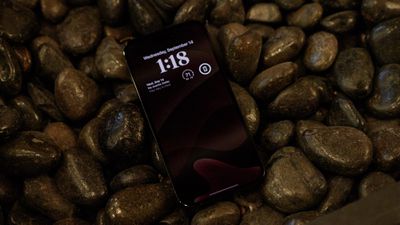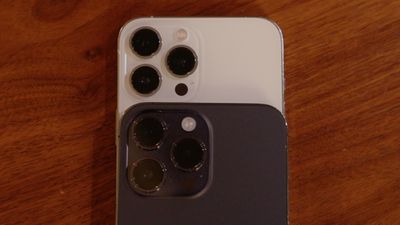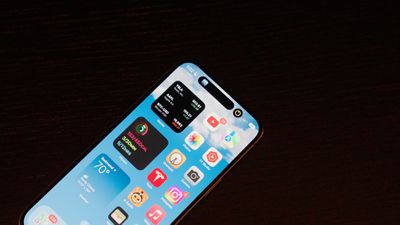Happy iPhone launch day! The iPhone 14, iPhone 14 Pro, and iPhone 14 Pro Max are officially in the hands of customers and are available in Apple retail stores worldwide. We managed to pick up an iPhone 14 Pro and thought we'd show it off for MacRumors readers awaiting their deliveries or still trying to decide on a purchase.
First and foremost, the Dynamic Island is one of the most interesting new iPhone 14 Pro features because it's a clever redesign that turns the TrueDepth system hardware into part of the user interface. Right out of the box, the Dynamic Island works well, and it's going to change the way we view information and interact with our iPhones.
The Dynamic Island changes shape and function for alerts like incoming phone calls, AirPods being connected, Face ID, Apple Pay, charging, when the camera is in use, when music is playing, and tons more. It does a lot, and since it's front and center, it feels like a more seamless and integrated notification experience.

Apple also introduced always-on display technology, which is a notable change and brings the iPhone 14 Pro models in line with the Apple Watch. The always-on display is just a dimmer version of your Lock Screen with no additional customization options, so you can see the time, your widgets, and a darkened version of your wallpaper even when the iPhone's display isn't in active use. Always-on display uses a new 1Hz refresh rate to preserve battery life, but reviews so far have suggested that you might see a bit of battery drain using it. We're going to test that out next week.
There's a new 48-megapixel camera in the iPhone 14 Pro, which also has an updated sensor that lets in more light, along with the "Photonic Engine" software optimizations that further improve low-light photography. Images of course look fantastic, but we will be doing a deeper dive into the camera to really dig into the differences between the iPhone 14 Pro and iPhone 13 Pro models.
You'll notice the low-light photography improvements, and with close-up photos, you can see more natural bokeh even when not using Portrait Mode.

By default, Apple is using pixel binning to combine the data from four pixels into one for a 12-megapixel photo from the 48-megapixel lens, but you can take full 48-megapixel RAW images. With this option, you can crop in a decent bit, and Apple has also used it to provide a 2x zoom option that's available alongside the 3x zoom from the telephoto. 2x zoom is nicer for portraits, so it's great to have options.
For video, there's an Action mode that makes action sequences smoother and gets rid of camera shake, mimicking what you might get when you use a gimbal. Action mode works at up to 2.8K resolution, and outside of Action mode, you've got 4K video available at 60, 30, and 24 fps. Unfortunately, we never got that rumored 8K video option.

Moving on to the A16, the iPhone 14 Pro models are the only ones to get an updated chip this year. The A16 is the first chip built on TSMC's 4-nanometer process, an upgrade over the 5-nanometer process. The smaller node basically means the chips are faster and more efficient. The A15 was already blazing fast so you might not see notable changes in day to day use, and on benchmarks, we can see differences in CPU and GPU performance, but it's not a drastic upgrade.
We weren't able to test Crash Detection or Emergency SOS via satellite in time for this video, but these are two safety features that make the iPhone more valuable than ever in an emergency situation, and we'll check them out in more detail at a later date.
Have you picked up an iPhone 14 Pro or Pro Max? Let us know what you think of it in the comments. Note that most of the features with the exception of Crash Detection and satellite connectivity are limited to the iPhone 14 Pro models and are not available on the iPhone 14 or iPhone 14 Plus.























